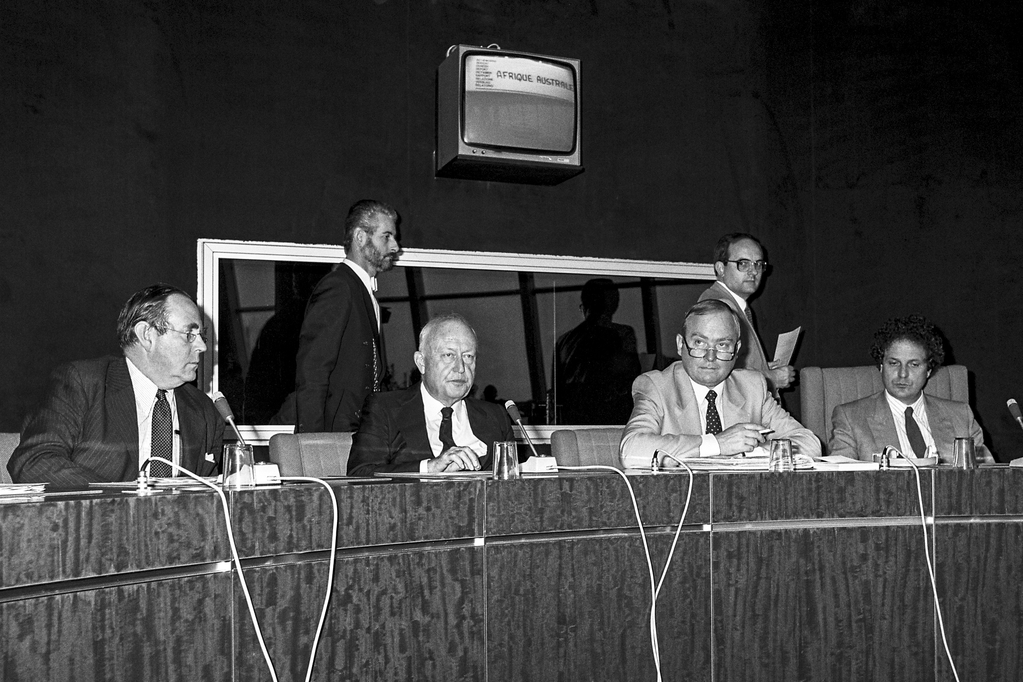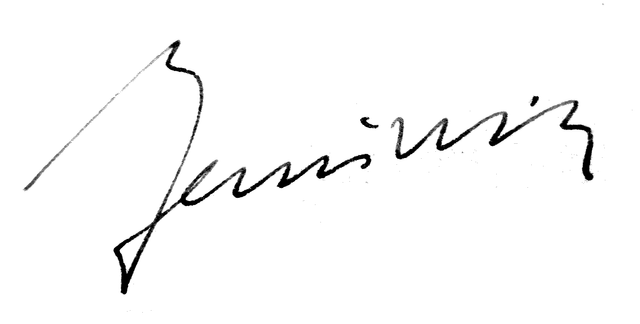Biography
Pierre Pflimlin was born on 5 February 1907 in Roubaix in the Nord department of France. He completed his higher education in Paris and at the University of Strasbourg, graduating in law and political sciences. From 1933, he worked as a lawyer at the Strasbourg Bar. He became an examining magistrate in Thonon-les-Bains, Haute-Savoie (1941-1944), and subsequently Deputy Public Prosecutor in Metz. In 1945, he joined the Popular Republican Movement (MRP), serving as party Chairman from 1956 to 1959. In 1946, he was elected as a member of the National Assembly. He also retained his office as a municipal councillor for Strasbourg. He held government posts from 1946 during the Fourth and Fifth Republics.
In 1962 he resigned, along with the other ministers from the MRP, over disagreements with General de Gaulle about European integration. From that point on, Pierre Pflimlin's political activity under the Fifth Republic revolved around his post as Mayor of Strasbourg, an office he held from 1959 to 1983. He was also President of the Parliamentary Assembly of the Council of Europe (1963-1966).
Pflimlin died on 27 June 2000 in Strasbourg.
Political Posts held
• 1979-1989: Elected to the European Parliament as a member of the EPP; Vice-President of the European Parliament during his first parliamentary term
• 1979-1980: Committee on Budgetary Control; Committee on Transport
• 1983-1984: Committee on Energy and Research
• 1979-1987: Parliament's Bureau
• 1984-1987: President of the European Parliament
• 1987-1989: Political Affairs Committee
• 1989: Stood down and went into retirement
What's in the Archives
To date, the archives of Pierre Pflimlin's Office over 2,700 files contain more than 16,000 items, arranged according to the various activities carried out during the President's term of office.
Public Figure
PE2 P1 100/PERS
This series is made up of seven series on subjects relating to the President as a public figure. The largest series are those relating to sponsorships and events, media image, defence of human rights and, lastly, exchanges with private individuals.
Presidency of Parliament
PE2 P1 200/PRES
This group of series is made up of eight series relating to the President's political duties.
The first series, 'Exercise of the Presidency', refers to the Pflimlin's activities during Strasbourg part-sessions and also to his relations with the Bureau and the enlarged Bureau. This series also reflects the various events and meetings that punctuated his term of office, such as hearings and courtesy visits, receptions of prominent personalities and official visits. The four following series cover the President's various relations: interinstitutional (Council, Commission and other Community bodies), interparliamentary (Member States and third countries), external (Member States, third countries, international organisations, national political parties and trade unions, etc.), with the press, and with citizens (in particular requests for subsidies, various appeals for the defence of human rights, and EP and Community activities).
The second-last series contains documents concerning relations with some of the European Parliament's political bodies such as the College of Quaestors, parliamentary committees and delegations, and political groups. The last series relates more specifically to the President's Office, chiefly from the point of view of its organisation, functioning, and mail (filed chronologically in terms of incoming and outgoing).
Secretariat of Parliament
PE2 P1 300/SECR
This group of series presents documents relating to the administrative and legal duties of the President's Office, i.e. its relations with the various directorates-general and the Legal Service.
The largest series covers relations with the following directorates-general: DG Committees and delegations, DG Information and public relations (in particular the information policy and press offices series), and, finally, DG Administration, personnel and finance (in particular the 'Staff Regulations and conditions of employment', the 'Buildings and premises' and the 'Protocol' series).
Representation of staff and political groups
PE2 P1 400/CPGP
The last group of series contains items concerning relations with the Staff Committee, trade unions and, finally, the secretariat of the political groups.
 Portrait of EP President Pierre Pflimlin chairing the plenary session at the E.P. in Strasbourg © European Communities 1984
Portrait of EP President Pierre Pflimlin chairing the plenary session at the E.P. in Strasbourg © European Communities 1984 Meeting with EP President Pierre Pflimlin (second from the left), the UK Minister of State for the Treasury Peter Brooke (L), the European Commissioner in charge of Budget, Financial Control, Personnel and Administration Henning Christophersen, and Chairman of the Committee on Budgets Jean-Pierre Cot at the EP in Strasbourg in July 1986. © European Communities 1986
Meeting with EP President Pierre Pflimlin (second from the left), the UK Minister of State for the Treasury Peter Brooke (L), the European Commissioner in charge of Budget, Financial Control, Personnel and Administration Henning Christophersen, and Chairman of the Committee on Budgets Jean-Pierre Cot at the EP in Strasbourg in July 1986. © European Communities 1986
